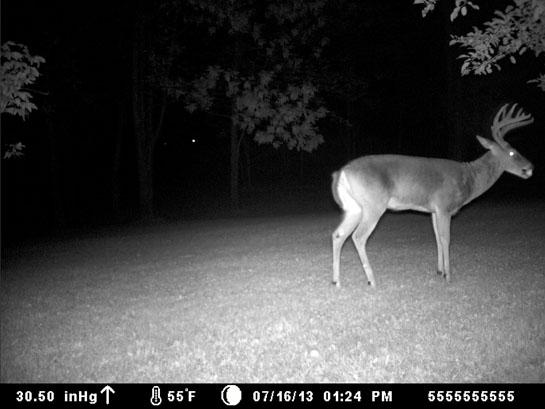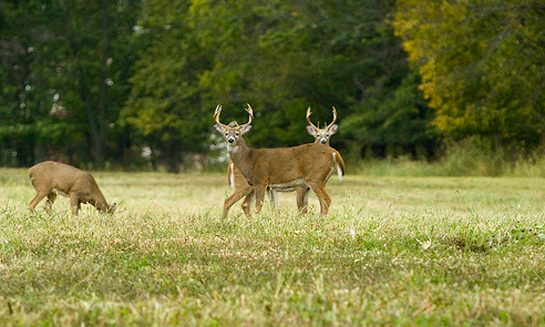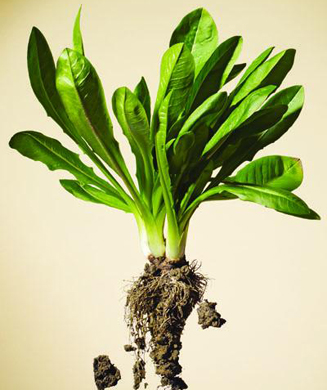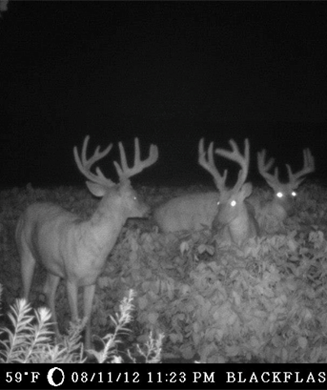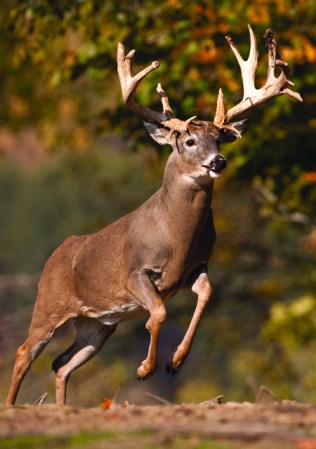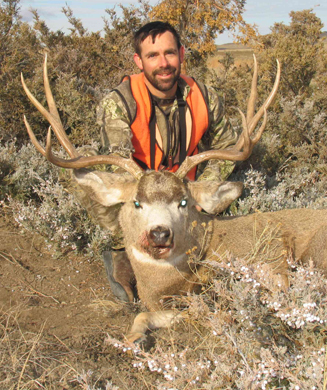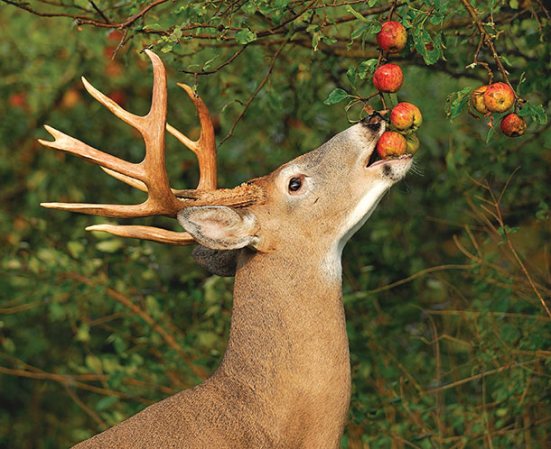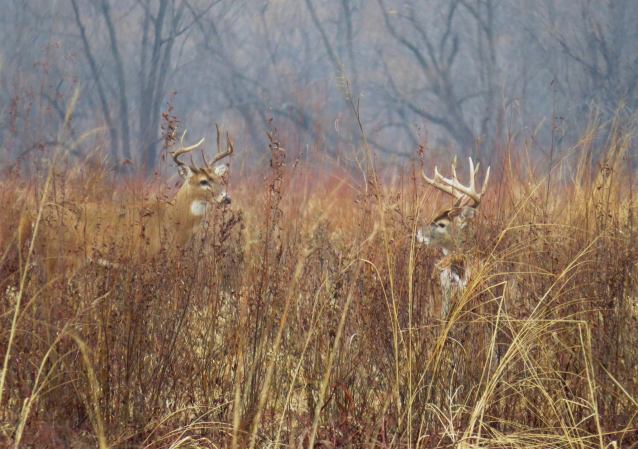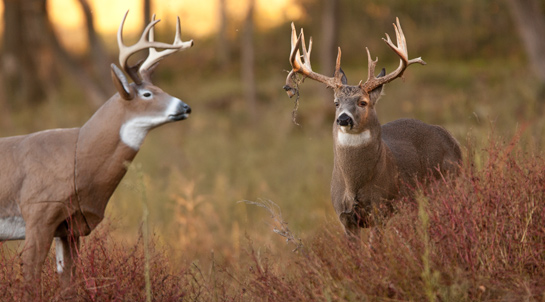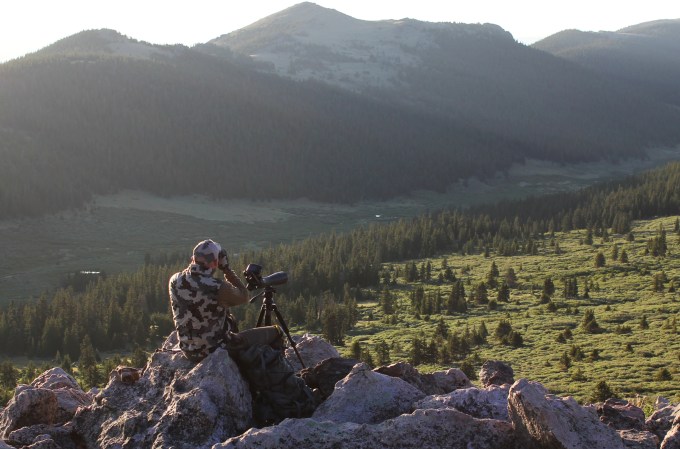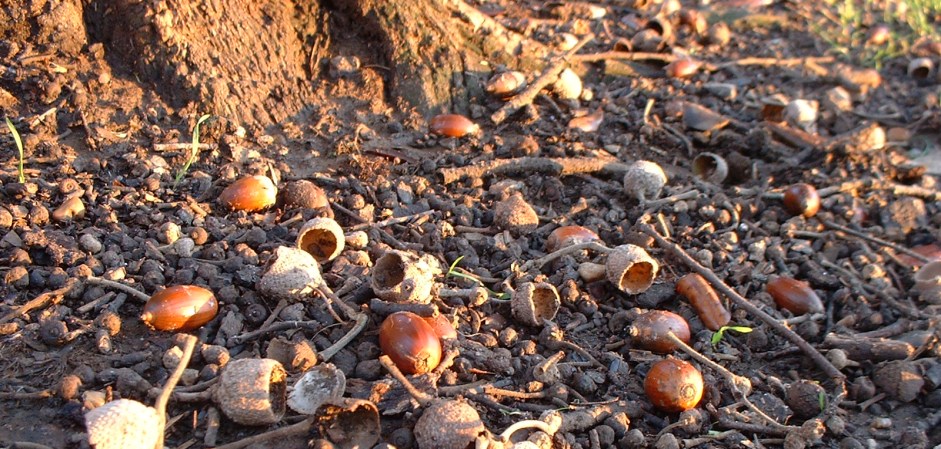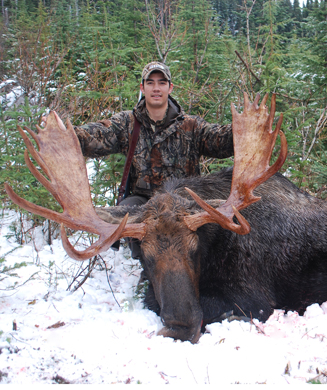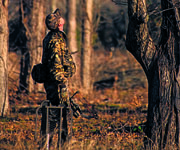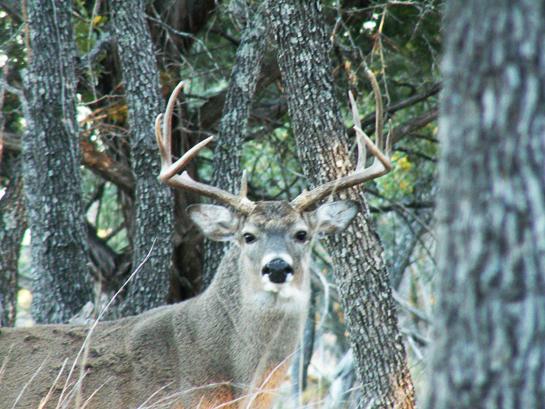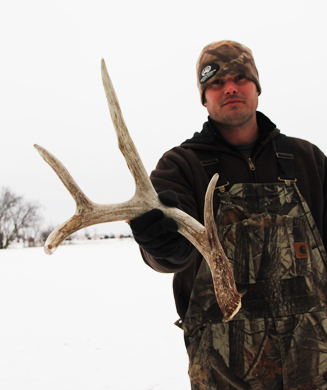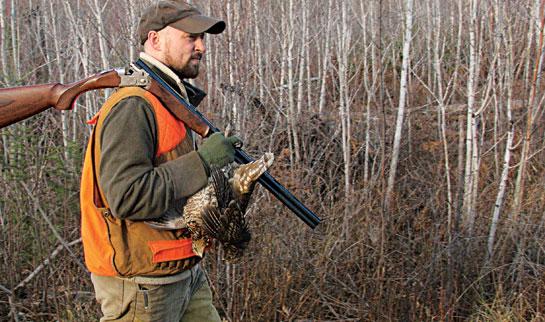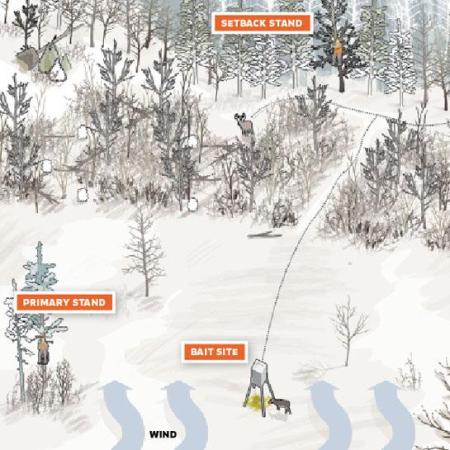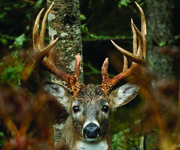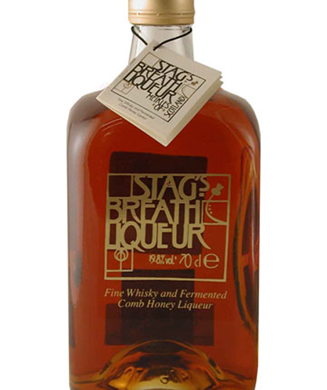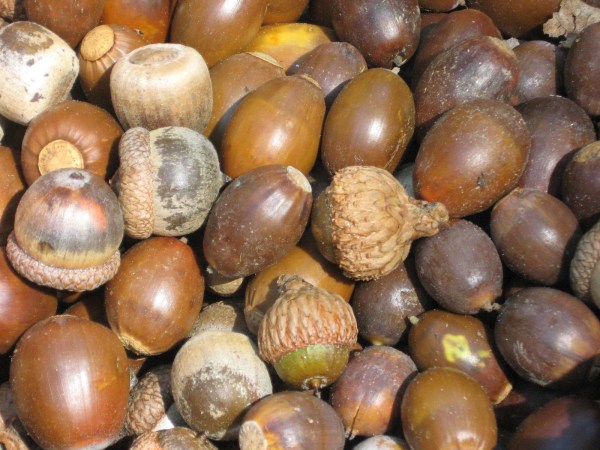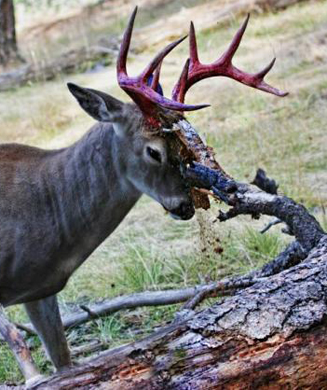All deer have to eat–particularly in the pre-rut period, when whitetails are stoking their stomachs for breeding challenges, and after the rut, when they’re recovering and building stores for winter. Find the best deer foods, and you can bet does and bucks will show up in good numbers.
Pinpointing choice foods is especially important these days, with severe drought affecting much of the country. The lack of rain has devastated many agricultural crops that deer depend on, so discovering natural foods in river bottoms, creek drains, and swamps will be even more important this year than in past seasons.
Soft mast is among the most important deer food during early bow seasons, because it’s available to game long before acorns are ripe or cornfields are cut. Thus, areas that attract deer and hold them with their fruity foods are ideal spots to hunt prior to the rut. By the time most firearms seasons roll around, fruit has long since fallen and been consumed.
Locating wild fruits can be as challenging as finding any other preferred natural deer food, like acorns. There’s no substitute for wearing out boot soles to scout for fruit, but don’t just look at the ground. A persimmon tree or grape vine hammered by feeding deer rarely has fruit lying around under it. Wild fruit usually doesn’t last long once it hits terra firma. If the deer don’t eat it, raccoons, foxes, possums, and bugs will.
Droppings and tracks are obvious signs of feeding deer. But sometimes the soil will be heavily trafficked, and leaves and sticks will be flipped around in an unusual way from animals nosing under them, like they do for acorns. When you locate a spot that has tracks, droppings, and flipped leaves, look up for trees bearing fruit. Binoculars help, and if the site is inclined, be sure to look uphill, since apples, pears, plums, and grapes roll.
Create a Buffet
▶ If you find a fruit-bearing tree with deer sign nearby but no fruit on the ground for deer to eat, shake the tree and its limbs. Knock down as much fruit as possible to attract deer. Grapes on tall, winding vines can be tough to reach, but a pole saw works well for clipping off ripe grapes and trimming tall fruit trees.
Many of the best fruit trees are found around homesteads, near woods openings, and at field edges, especially where there is a drought-proof water source like a spring creek or pond. Such trees yield a lot of soft mast because sunlight can reach them, which helps with flowering and fruit production. Many of these trees also benefit from fertilizers, either from the old homesteads or nearby active farm fields.
Some of the most fruit-heavy apple and persimmon trees are in fencerows between fields, and around crop perimeters where irrigation ditches hold water. Similar spots in the comparative open might have abundant deer tracks and droppings, but because deer must walk across open fields to get to them, they’re usually visited only at night. Such “open” fruit trees are notorious for attracting does, and some hunters who are keen on tagging a buck shun them for that reason.
But these spots draw bucks, too, because as the rut approaches, the ladies bring the gentlemen. Be sure to backtrail doe tracks that lead to open, obvious fruit trees in fields or around old farms. Often, as you get closer to heavier cover, you’ll discover increased sign of big deer. It may be several hundred yards from where the fruit trees are, but bucks, does, and yearlings are holding in the area because of the food.
Just Browsing
▶ It’s important to remember that deer are browsing animals, not grazing ones. They like a multitude of shrubs, especially when much of the woods are still green with mature growth (as is the case in the South at this time of year). Greenbrier (smilax) is an important deer food wherever it’s found, especially in the South, where it can grow year-round. Deer relish the glossy-green broadleaves of this woody, thorny vine, which can be found in lowlands and uplands. Look for telltale signs of deer nipping the vines, evidenced by blunt brown ends on plants found along trails near creeks and side ridges. Other choice deer browse that you should be able to identify includes jasmine, honeysuckle, and poison ivy.
Two oak varieties that can be an important food source are the water oak and the overcup oak. Both thrive in wet, thick areas that deer prefer to inhabit in the pre-rut, especially in drought years. Experts say water oaks and overcups don’t produce the most preferred acorns for deer–that honor goes to white and red oaks–but they are consistent producers, usually offering lots of acorns during seasons when other oak mast may fail to develop. And these trees drop acorns much earlier than many other oaks.
Finally, keep in mind that deer can change food preferences overnight, so you have to be willing to move stand locations. When you pinpoint an apple or honey locust tree, or a lush honeysuckle jungle, don’t automatically assume deer are waiting in line to dine there. Read the sign around the food source to determine if it is hot. Fresh tracks and very fresh droppings are the best evidence. When in doubt, hang a stand and hunt the spot a time or two.
But don’t get married to the place–the deer aren’t.


